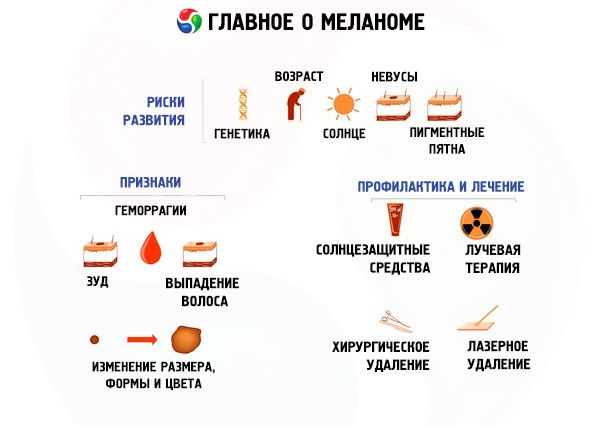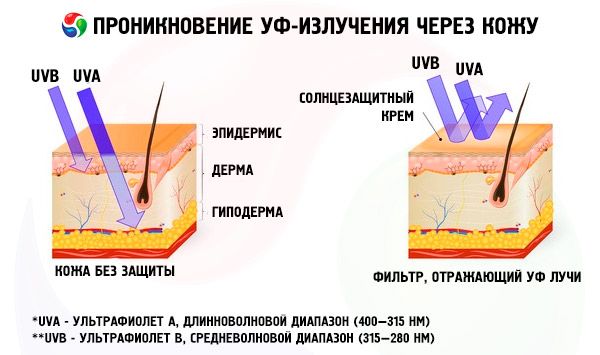Medical expert of the article
New publications
Sunburn moles
Last reviewed: 04.07.2025

All iLive content is medically reviewed or fact checked to ensure as much factual accuracy as possible.
We have strict sourcing guidelines and only link to reputable media sites, academic research institutions and, whenever possible, medically peer reviewed studies. Note that the numbers in parentheses ([1], [2], etc.) are clickable links to these studies.
If you feel that any of our content is inaccurate, out-of-date, or otherwise questionable, please select it and press Ctrl + Enter.
Moles are pigmented lesions, usually oval in shape, that appear on the surface of the skin.
Almost all people have these formations. Some have more, others have less - it all depends on our skin characteristics.
Causes moles after sunburn
The main reason for the appearance of moles is ultraviolet radiation, which activates melanocytes (skin cells). The result of melanocyte activity is the production of the pigment melanin. In the epidermis (the upper layer of the skin), the pigment is destroyed, leading to a brownish color. Based on this, with a moderate tan, our skin acquires a bronze tint. Sometimes, the pigment is unevenly distributed over the layers of the skin, forming excessively pigmented areas - spots or moles. Their formation is associated with intense sunlight or staying in a solarium. Most moles that appear after tanning are not dangerous, this is a response of the skin to irritating environmental factors. Occasionally, the mass appearance of moles can indicate skin diseases, serious damage to the immune system. With a large number of moles, within a short time (1-3 months), a person must consult a dermatologist.
 [ 1 ]
[ 1 ]
Pathogenesis
There are two main types of moles: congenital and acquired. Congenital pigmentations are present from birth or appear during the first months of a child's life. With the active growth of the child, they symmetrically increase in size. They can be quite large.
Acquired moles appear on the skin throughout life. They are small in size.
Symptoms moles after sunburn
Moles are differentiated by color (from light to dark brown), by the nature of the border (even or uneven edges), by the degree of elevation above the skin and symmetry.
The borders of moles can be uneven, jagged, unclear. These are signs of possible malignancy of the neoplasm. Normally, the edge of a mole is even and clear.
The heterogeneity of color should also be a warning sign, the presence of inclusions of black, red, and bluish shades. Safe moles are of a uniform color.
If a mole increases in size and its diameter exceeds 6 mm, a specialist consultation is necessary.
Lots of moles after tanning
If a lot of moles appear on the body after tanning, do not panic. This indicates that the person has been exposed to the sun for a long time and his skin has produced an increased amount of melanin. This process is considered normal and does not deserve close attention.
You should be wary of large moles that do not have clear boundaries and uniform color.
White spot around mole after tanning
White spots may appear around moles after tanning. This is not evidence of their malignant degeneration, but may indicate the presence of vitiligo. With this disease, pigmentation is minimized or disappears in some areas of the skin.
White spots come in a variety of shapes and sizes. Often a type of mole, the spots protrude above the surface of the skin and disappear on their own after some time.
Common moles, bordered by depigmented skin, are called Sutton's nevus by specialists. These white areas of skin always have an irregular shape and tend to merge. In most cases, this disease does not lead to the formation of melanoma. Most often, achromic spots disappear on their own. Specialists consider malignancy of such a process unlikely and offer treatment only in cases where a person considers it a serious cosmetic problem.
Complications and consequences
Moles, in their majority, do not have negative consequences. In case of their removal procedure, minor scars and marks remain, which, over time, become almost invisible.
Only dangerous moles provoke serious consequences that threaten a person’s life.
In addition to scars and marks after mole removal, a burning sensation, itching, and dull pain are possible. One of the most formidable complications is an allergic reaction to the anesthetic. To avoid this, the doctor must carefully collect anamnesis and take into account all risk factors.
For faster recovery of skin areas after surgery, it is necessary to strictly follow the recommendations for the use of special ointments for healing and smoothing scars.
Diagnostics moles after sunburn
Dermatological examination of moles should be performed by each of us. This can be done independently. For this, the entire body is carefully examined. Moles that raise doubts require consultation in a specialized medical clinic.
To make an accurate diagnosis, a dermatologist must carefully examine questionable moles and conduct the following types of examinations: collecting anamnesis (information about the presence of diagnosed melanoma among relatives); dermatoscopy (examination of moles under high magnification); if necessary, a biopsy is used.
 [ 7 ]
[ 7 ]
Tests
When examining and diagnosing nevi, no tests are required.
In case of surgical intervention, in addition to the usual (biochemical examination and general blood analysis), specific blood tests may be required (coagulogram, determination of blood clotting time, blood glucose levels, etc.). These studies are necessary for a general assessment of the body and internal organs. Sometimes the test results reveal contraindications to the removal of dangerous moles.
Instrumental diagnostics
Dermatoscopy is a painless, non-invasive (does not damage the skin), safe examination method that allows for early diagnosis of neoplasms.
Digital dermatoscopy allows you to record all pigmented lesions, measure their area, diameter, degree of pigmentation and monitor the dynamics using special equipment.
Biopsy is the most accurate method of diagnosing malignant neoplasms. There are two types of biopsy: puncture and excisional;
Additionally prescribed: ultrasound, radiography, MRI.
What do need to examine?
How to examine?
Differential diagnosis
Only a qualified specialist (dermatologist or oncologist) can distinguish a malignant neoplasm from an ordinary mole.

Based on their appearance, pigment spots are classified as flat nevi (pigmentation that barely rises above the surface of the skin), papillomatous nevi (with multiple growths in the form of papillae), nevi in the form of a formation on a stalk, etc.
Who to contact?
Treatment moles after sunburn
The simplest, but least effective way to combat moles after sunbathing is to use special creams and masks. The creams contain depigmenting substances that prevent the formation of melanin and pigmented areas become lighter.
The least traumatic method is superficial peeling (the effect of acids causes a slight chemical burn of the skin, freeing it from a layer of keratinized cells containing unwanted pigment). Combining the effect of acids with the use of substances that inhibit the production of the pigment melanin can consolidate the result.
One of the quickest ways to get rid of unwanted pigmentation is laser resurfacing. Layer-by-layer destruction of pigment occurs as a result of exposure to a laser beam.
More radical methods of removing moles are electrocoagulation, cryodestruction and surgical excision.
Medicines
It is not recommended to use medications on your own due to the existing risk of causing malignancy of the tumor.
Folk remedies for moles after sunburn
How did our ancestors get rid of moles after sunbathing? Ancient healers recommended special rituals. Here are some of them.
You need one small washed potato, cut into 2 halves. Throw away one half, and rub the mole with the cut of the other. Then bury the potato in a deserted place. As a result of the ritual, the mole should disappear.
They also used a grain ear with the top torn off. They pricked the mole several times with the stem and buried it in damp soil. When the stem rotted, the mole would disappear.
The well-known castor oil was also used to get rid of moles. In the mornings and evenings, the pigmented area of the skin was lubricated, waiting for the result no earlier than a month.
Read also: Removing moles at home
 [ 8 ]
[ 8 ]
Herbal treatment
Lemon, calendula, celandine and onion juices lighten the skin, age spots and freckles a little, but do not help get rid of moles.
Surgical treatment
There are several methods of radical removal of moles:
- Electrocoagulation - a cauterizing effect of electric currents, allowing for the rapid removal of a mole, performed under local anesthesia with the application of cosmetic stitches.
- cryodestruction – freezing with liquid nitrogen instantly destroys the mole.
- laser removal of moles;
- The most effective method of radical treatment is surgical excision with a scalpel, performed under anesthesia and with the application of sutures.
- surgical method. The surgeon uses a local anesthetic to numb the area around the mole, then removes it with a scalpel and then applies stitches.
Prevention
In order to avoid creating an additional risk of developing moles after tanning, you must follow these recommendations:
- In the summer, time spent in the open sun during midday hours is limited as much as possible.
- Mandatory use of sunscreens.

- If exposure to the sun is unavoidable, it is necessary to protect exposed areas of skin as much as possible with light-colored clothing: wide-brimmed hats, trousers made of lightweight natural fabrics, blouses and shirts with long sleeves.
 [ 9 ]
[ 9 ]

